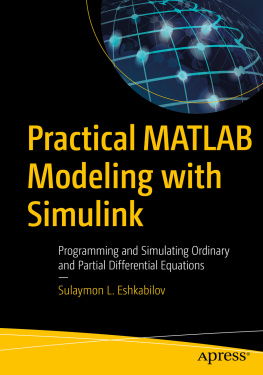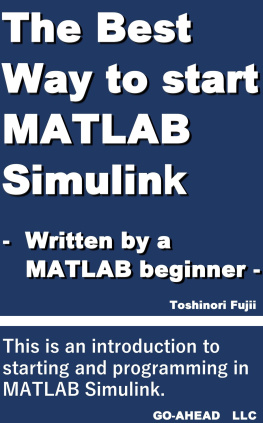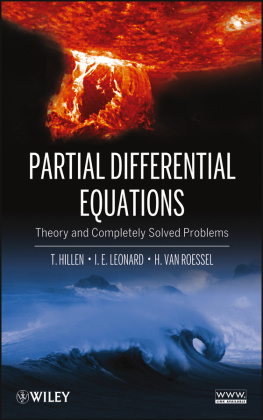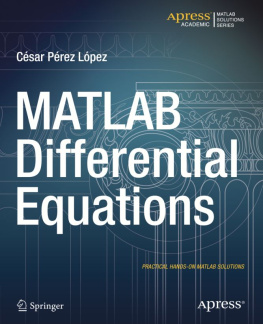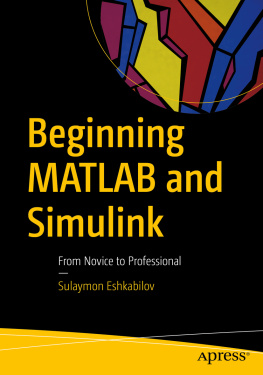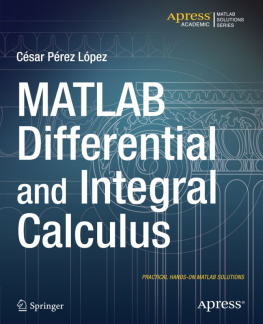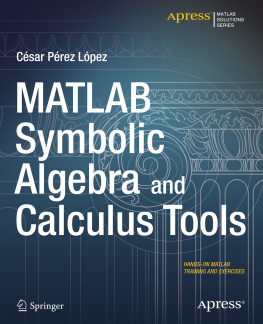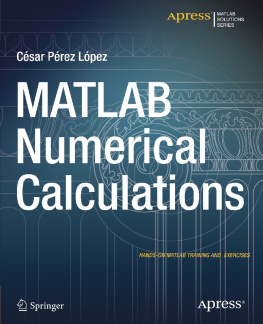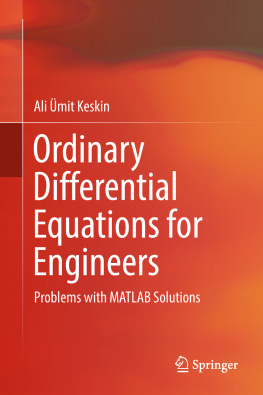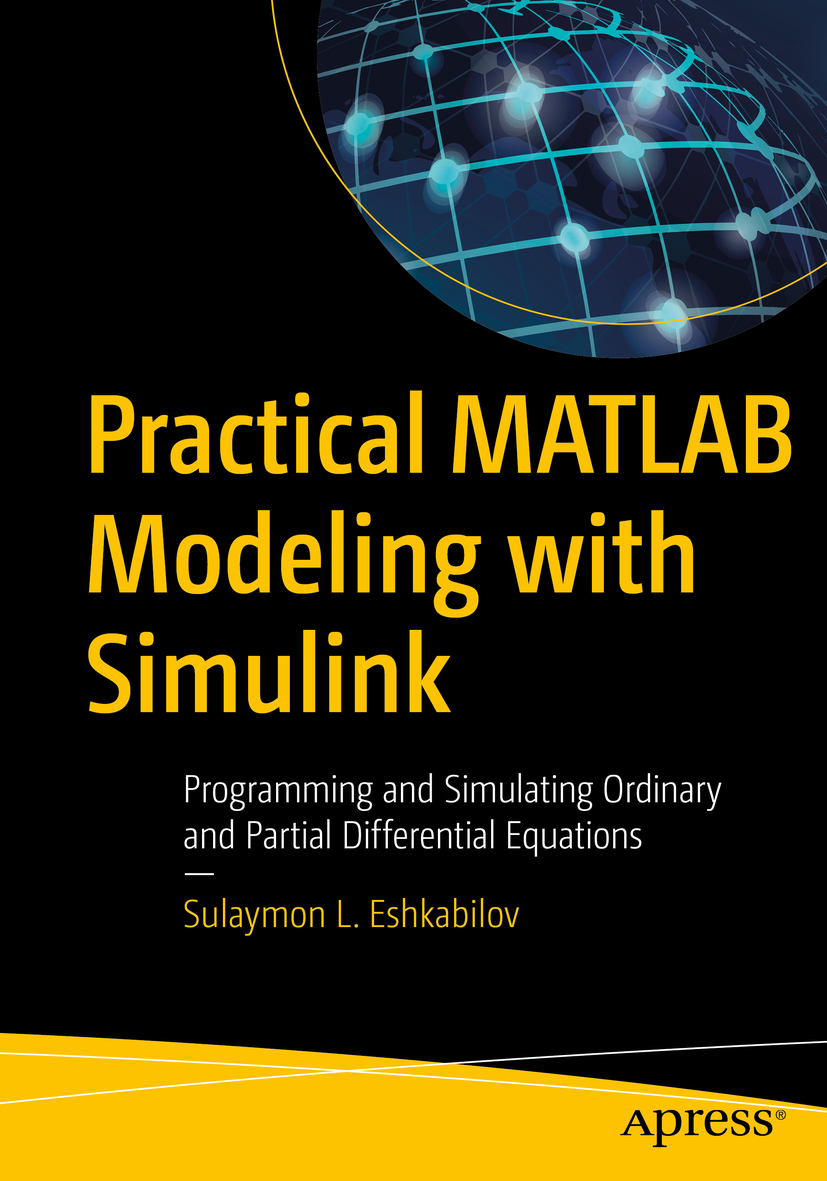Sulaymon L. Eshkabilov - Practical MATLAB Modeling: Programming Ordinary and Partial Differential Equations with Simulink
Here you can read online Sulaymon L. Eshkabilov - Practical MATLAB Modeling: Programming Ordinary and Partial Differential Equations with Simulink full text of the book (entire story) in english for free. Download pdf and epub, get meaning, cover and reviews about this ebook. year: 2020, publisher: Apress, genre: Children. Description of the work, (preface) as well as reviews are available. Best literature library LitArk.com created for fans of good reading and offers a wide selection of genres:
Romance novel
Science fiction
Adventure
Detective
Science
History
Home and family
Prose
Art
Politics
Computer
Non-fiction
Religion
Business
Children
Humor
Choose a favorite category and find really read worthwhile books. Enjoy immersion in the world of imagination, feel the emotions of the characters or learn something new for yourself, make an fascinating discovery.
- Book:Practical MATLAB Modeling: Programming Ordinary and Partial Differential Equations with Simulink
- Author:
- Publisher:Apress
- Genre:
- Year:2020
- Rating:3 / 5
- Favourites:Add to favourites
- Your mark:
Practical MATLAB Modeling: Programming Ordinary and Partial Differential Equations with Simulink: summary, description and annotation
We offer to read an annotation, description, summary or preface (depends on what the author of the book "Practical MATLAB Modeling: Programming Ordinary and Partial Differential Equations with Simulink" wrote himself). If you haven't found the necessary information about the book — write in the comments, we will try to find it.
Employ the essential and hands-on tools and functions of MATLABs ordinary differential equation (ODE) and partial differential equation (PDE) packages, which are explained and demonstrated via interactive examples and case studies. This book contains dozens of simulations and solved problems via m-files/scripts and Simulink models which help you to learn programming and modeling of more difficult, complex problems that involve the use of ODEs and PDEs.
Youll become efficient with many of the built-in tools and functions of MATLAB/Simulink while solving more complex engineering and scientific computing problems that require and use differential equations. Practical MATLAB Modeling explains various practical issues of programming and modelling.
After reading and using this book, youll be proficient at using MATLAB and applying the source code from the books examples as templates for your own projects in data science or engineering.
What You Will Learn
- Model complex problems using MATLAB and Simulink
- Gain the programming and modeling essentials of MATLAB using ODEs and PDEs
- Use numerical methods to solve 1st and 2nd order ODEs
- Solve stiff, higher order, coupled, and implicit ODEs
- Employ numerical methods to solve 1st and 2nd order linear PDEs
- Solve stiff, higher order, coupled, and implicit PDEs
Who This Book Is For
Engineers, programmers, data scientists, and students majoring in engineering, applied/industrial math, data science, and scientific computing. This book continues where Apress Beginning MATLAB and Simulink leaves off.
Sulaymon L. Eshkabilov: author's other books
Who wrote Practical MATLAB Modeling: Programming Ordinary and Partial Differential Equations with Simulink? Find out the surname, the name of the author of the book and a list of all author's works by series.

